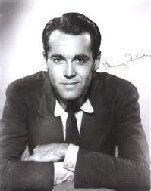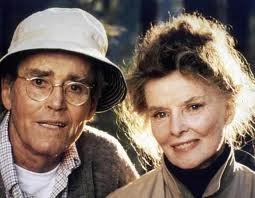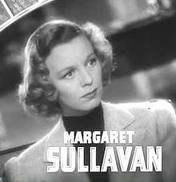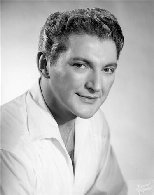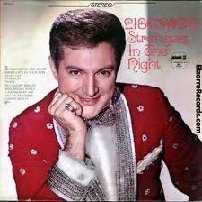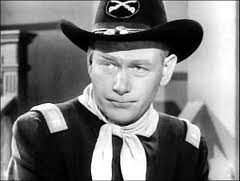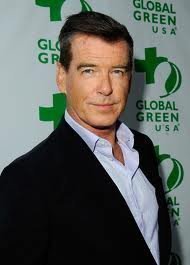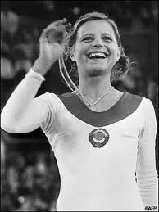The origins of frozen desserts are obscure although several accounts exist about their history. Some sources describe ice cream-like foods as originating in Persia as far back as 550 BC while others claim that the Roman Emperor Nero had ice collected from the Apennine Mountains to produce the first sorbet mixed with honey and wine.
Although sorbets are believed to have been invented in Persia, other accounts say ice cream originated in the Mongol Empire and first spread to China during its expansion.
Its spread throughout Europe is sometimes attributed to Arab traders, but more often to Marco Polo. Though it's not mentioned in any of his writings, Polo is often credited with introducing sorbet-style desserts to Italy after learning of it during his travels to China. The Italian duchess Catherine de' Medici is said to have introduced flavored sorbet ices to France when she brought some Italian chefs with her to France upon marrying the Duke of Orléans (Henry II of France) in 1533. One hundred years later, Charles I of England was reportedly so impressed by the "frozen snow" that he offered his own ice cream maker a lifetime pension in return for keeping the formula secret, so that ice cream could be a royal prerogative. There is no evidence to support any of these legends.
Snow was used to cool drinks in Greece around 500 BC
and Hippocrates is known to have criticized chilled drinks for causing "fluxes of the stomach". Snow collected from the lower slopes of mountains was unsanitary and iced drinks were believed to cause convulsions, colic and a host of other ailments. Seneca criticized the extravagant costs associated with iced desserts in an era without refrigeration.
Despite this, ice and snow were prized ingredients in ancient cuisines including Japanese, Chinese, Greek and Roman cuisines. Ancient Egyptian hieroglyphs show a snow-filled vessel next to fruit juice. There are Tang dynasty records of a chilled dessert made with flour, camphor and water buffalo milk and recipes for snow-chilled sweets are included in a 1st-century Roman recipe book. There are Persian records from the 2nd century AD for sweetened chilled drinks with ice made by freezing water in the desert at night.
Ice cream was made possible only by the discovery of the endothermic effect. Prior to this, cream could only be chilled but not frozen. It was the addition of salt, that lowered the melting point of ice, which had the effect of drawing heat from the cream and allowing it to freeze. The first known record of this comes from the Indian poem Pancatantra, dating to the 4th century AD. The earliest written description of the process is known not from culinary texts, but the 13th-century writings of Ibn Abu Usaybia concerning medicine. The technique of "freezing" is not known from any European sources prior to the 16th century.
An early North American reference to ice cream is from 1744: "Among the rarities..was some fine ice cream, which, with the strawberries and milk, eat most deliciously."
Quaker colonists introduced ice cream to the United States, bringing their ice cream recipes with them. Confectioners sold ice cream at their shops in New York and other cities during the colonial era. Ben Franklin, George Washington, and Thomas Jefferson were known to have regularly eaten and served ice cream. Records, kept by a merchant from Catham street, New York, show George Washington spending approximately $200 on ice cream in the summer of 1790. The same records show president Thomas Jefferson having an 18-step recipe for ice cream. First Lady Dolley Madison, wife of U.S. President James Madison, served ice cream at her husband's Inaugural Ball in 1813.
Small-scale hand-cranked ice cream freezers were invented in England by Agnes Marshall and in America by Nancy Johnson in the 1840s.
The most popular flavors of ice cream in North America (based on consumer surveys) are vanilla and chocolate.
Many countries have regulations controlling what can be described as ice cream.
In the U.S., the FDA rules state that to be described as "ice cream", a product must have the following composition:
- greater than 10% milk fat
- 6 to 10% milk and non-fat milk solids: this component, also known as the milk solids-not-fat or serum solids, contains the proteins (caseins and whey proteins) and carbohydrates (lactose) found in milk
It generally also has:
- 12 to 16% sweeteners: usually a combination of sucrose and glucose-based corn syrup sweeteners
- 0.2 to 0.5% stabilizers and emulsifiers
- 55 to 64% water, which comes from the milk or other ingredients.
These compositions are percentage by weight. Since ice cream can contain as much as half air by volume, these numbers may be reduced by as much as half if cited by volume. In terms of dietary considerations, the percentages by weight are more relevant. Even the low-fat products have high caloric content: Ben and Jerry's No-Fat Vanilla Fudge contains 150 calories per half-cup due to its high sugar content.
Different regions of the country have their own way of making baked beans. This recipe for Southern Baked Beans is cooked up Southern-style, which means that it's flavored with classic ingredients that add just a bit of sweetness.
- 1 (15-1/2-ounce) can kidney beans, rinsed and drained
- 1 (15-1/2-ounce) can cannellini beans, rinsed and drained
- 1 (12-ounce) jar chili sauce
- 3/4 cup chopped onion
- 1/2 cup ketchup
- 1/4 cup brown sugar
- 2 teaspoons ground mustard
- Preheat oven to 325º. Coat an 8-inch square baking dish with cooking spray.
- In a large bowl, combine all ingredients. Pour into baking dish.
- Bake 50 to 60 minutes, or until beans are bubbly and sauce has thickened.
1909 – Margaret Sullavan, American actress (d. 1960)
1921 – Harry Carey, Jr., American actor (d.2012)
If the mouthwatering aromas wafting down the street haven’t told you, we will; May 16th is National Barbecue Day!
The purist in the world of barbecue either uses charcoal, wood, or gas and slow cooks the protein over indirect heat. While the type of protein and seasonings vary, each part of the country specializes in their own flavors and sauces.
For example, more tangy BBQ with a vinegar base can be found in North Carolina. South Carolina leans toward a sweeter sauce. The sauce can be applied thick or thin, giving it more of a glaze. Turn up the heat by adding spices and peppers. Smoking meat is another way to add flavor and tenderness, too.
Unique ingredients come from ketchup, mustard and Worcestershire, brown sugar, soy, and molasses. But you never know what combination of spices a barbecue master has in his or her repertoire. They’ve spent years perfecting their trade.
Pork is the original barbecue meat, but beef, chicken, lamb, and other proteins find their way into barbecue. If you think it’s just about the meat, you’d be wrong. The sides are just as important when it comes to good barbecue. An ideal coleslaw will pair well with a shredded bbq pork and make the perfect sandwich. The macaroni and cheese, potatoes and bbq baked beans – these are all staples of barbecue flavors.
HOW TO OBSERVE
Visit your favorite bbq restaurant. The best places have a line and sell out early. Or, plan ahead and make your one bbq.
And.... today is also
National Mimosa Day on May 16th celebrates the beverage of brunches! This simple cocktail offers a refreshing toast-worthy drink at celebrations of all kinds. Made with orange juice and sparkling wine, mimosas also add a bright punch of flavor the day after a celebration.
No matter the celebration, mimosas are served up in tall champagne glasses. They turn basic buffets and summer brunches into a festive occasion. You also don’t have to break the bank to make them. Fill the glasses half full with your favorite sparkling wine (it doesn’t have to be expensive champagne) and top it off with chilled orange juice. Garnish with an orange slice, and you’re all set.
Overnight guests will be delighted when you greet them with mimosas and an egg bake you prepared the night before. Or perhaps you’ll heat up the waffle maker. Whatever you serve, the morning will be a hit.
HOW TO OBSERVE
Mix up a couple of mimosas to go with brunch or a late breakfast. Learn to make them for baby showers, wedding showers, or other special occasions. It’s an excellent day for practicing toasts for those big occasions, too.
NATIONAL MIMOSA DAY
Jace Shoemaker Galloway, the Queen of Holidays, created National Mimosa Day.










